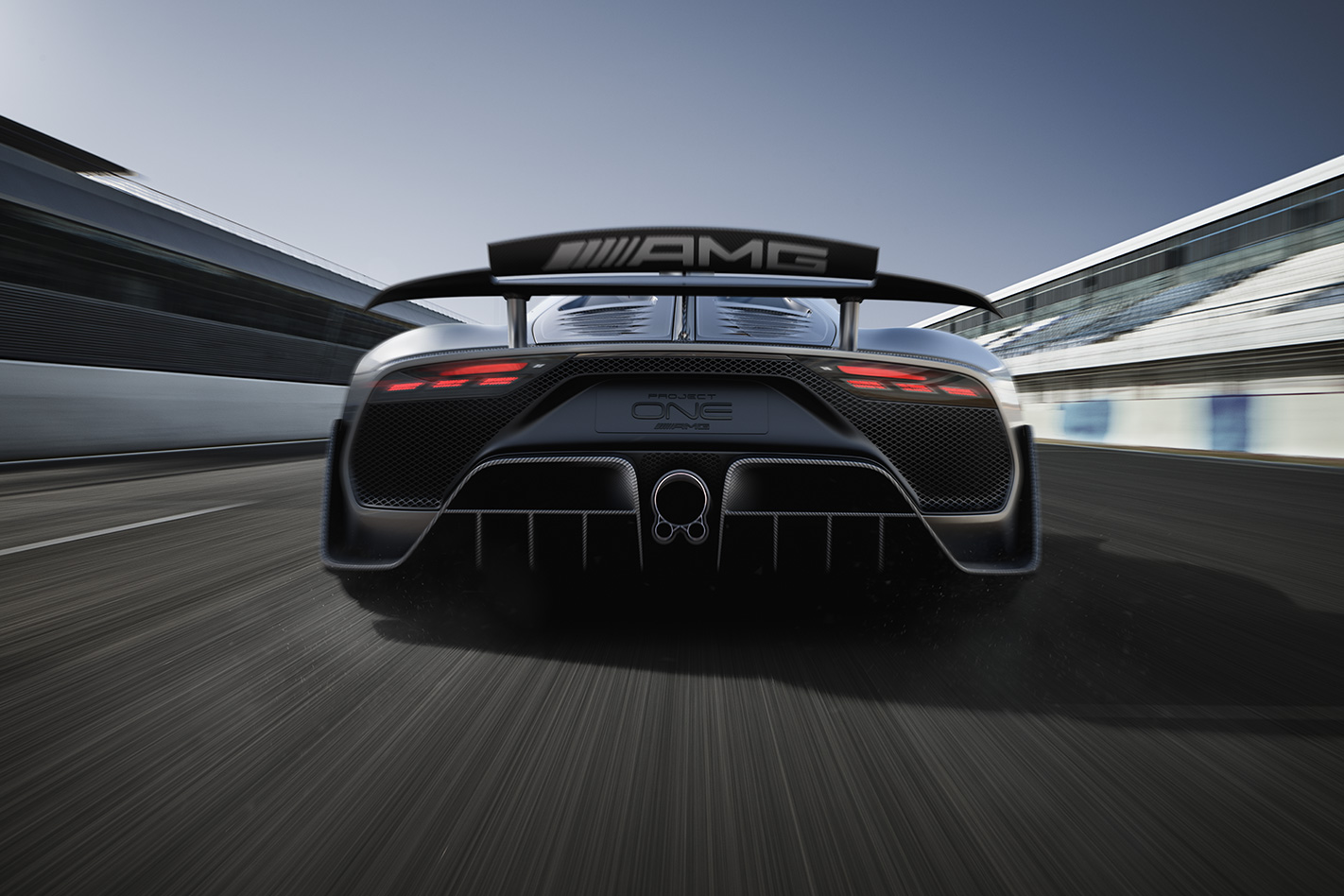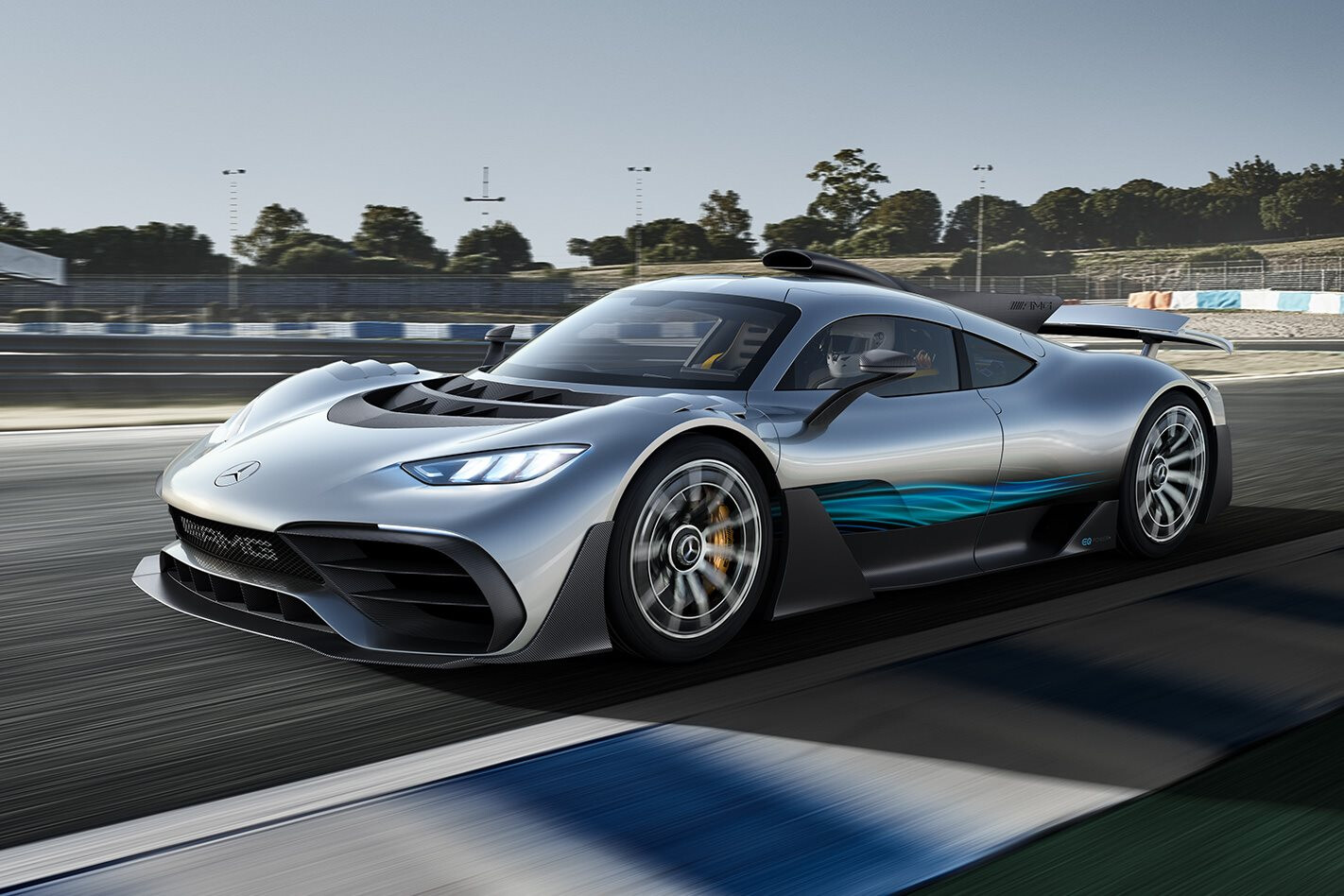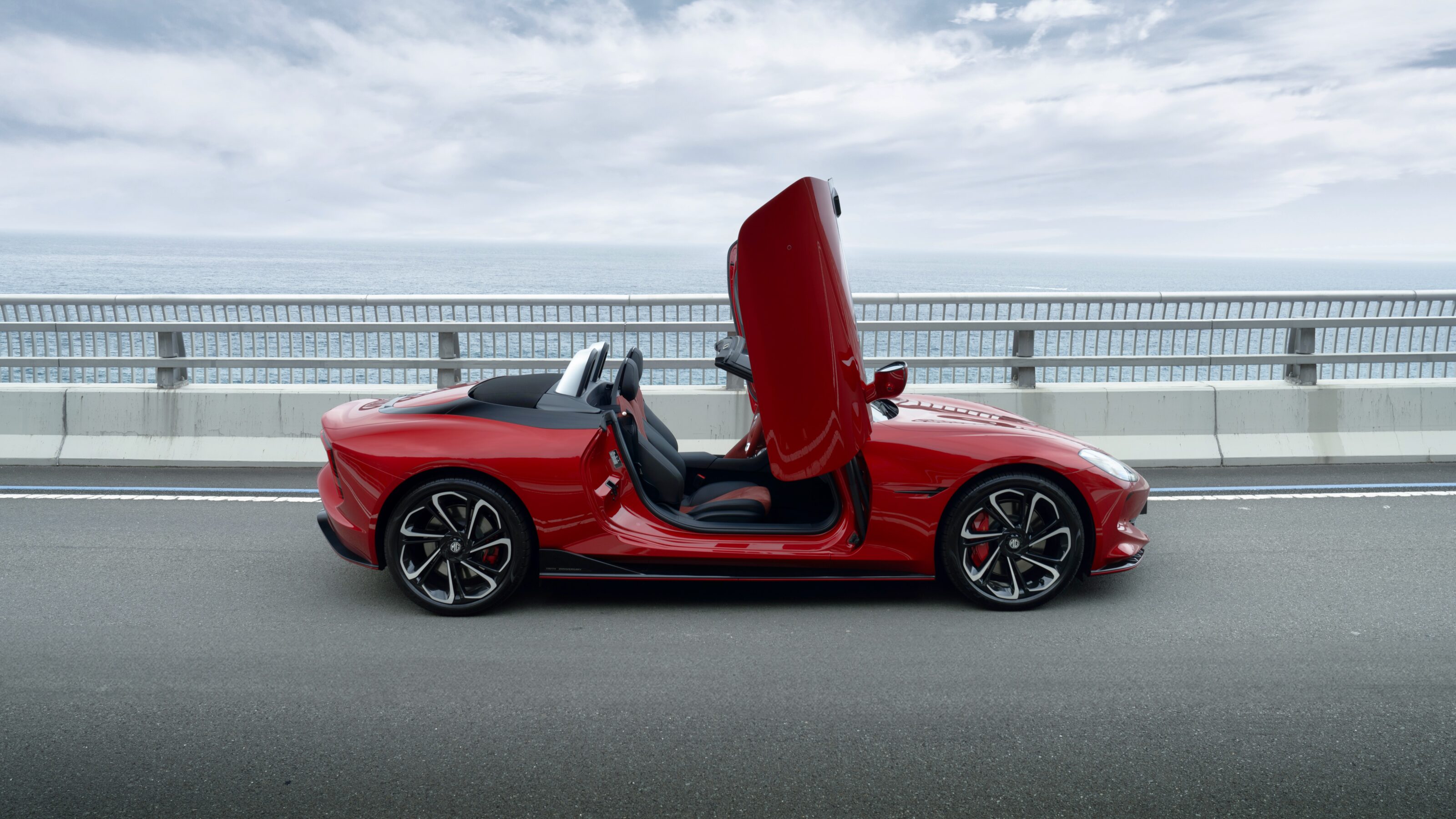MERCEDES-AMG has torn the covers off Project One at a media event on the eve of the Frankfurt motor show. The F1-engined hypercar is one the most ambitious road-going vehicles ever built.
The claim of “an F1 race car for the road” is one that has been trotted out plenty of times before; but the reality has invariably been a road car that incorporates limited technical elements that happen to be shared with a prototype racer.

The drivetrain’s centrepiece is a mid-mounted 1.6-litre V6 with two electric motors – one bolted directly to the crankshaft to provide additional torque, the second to eliminate lag for the engine’s massive turbocharger. To allow for the stratospheric maximum engine speed of 11,000rpm, the four overhead cams are gear driven and the valvetrain uses pneumatics rather than conventional springs.
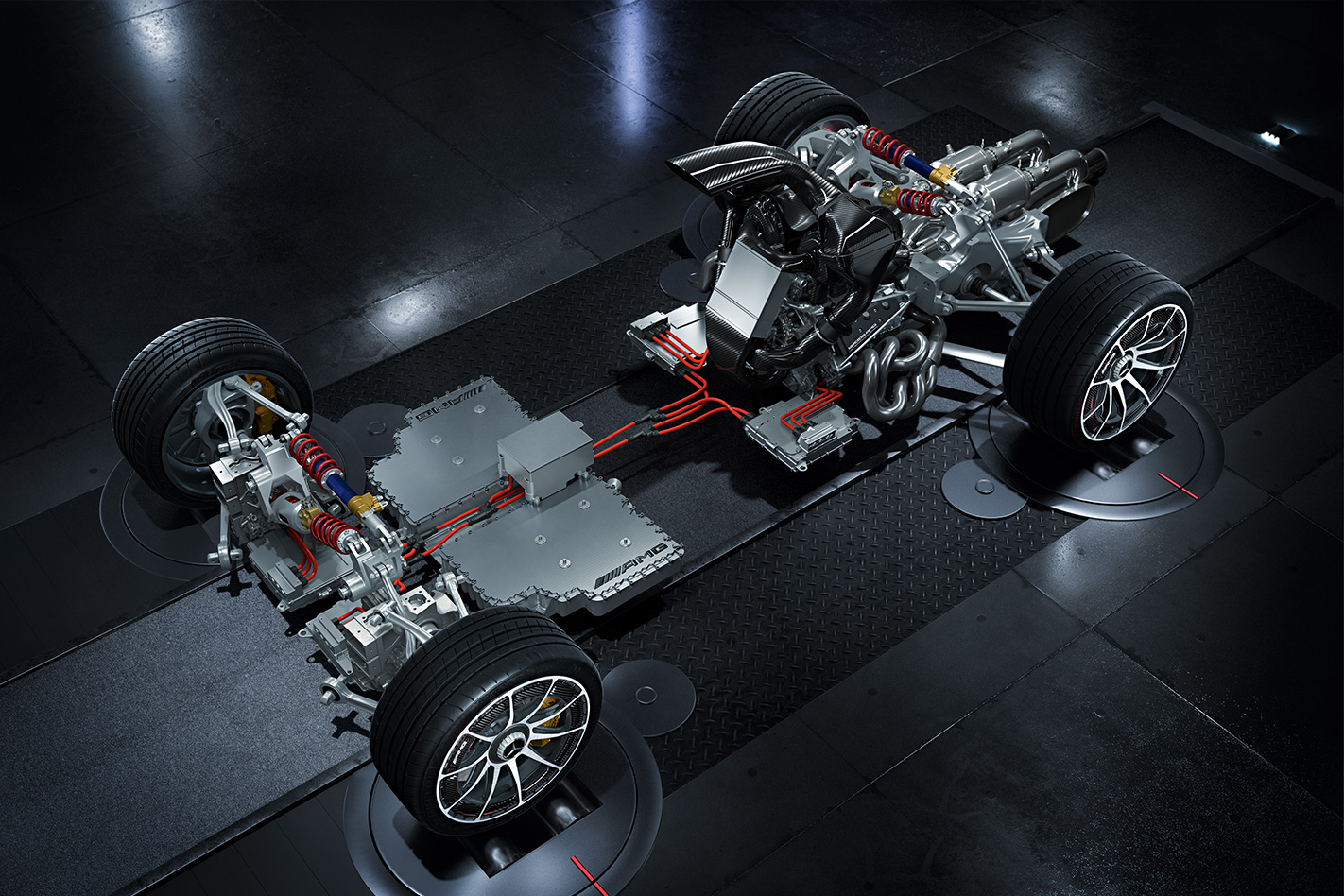
Project One’s combined system output is quoted as in excess of 740kW. That’s around the same figure as Lewis Hamilton’s race car, and enough, says Mercedes-AMG, to hurl the Project One from standstill to 200km/h in less than six seconds. For comparative purposes, the McLaren P1 and LaFerrari hit that mark in closer to seven. On a road long enough, AMG suggests a V-max beyond 350km/h.
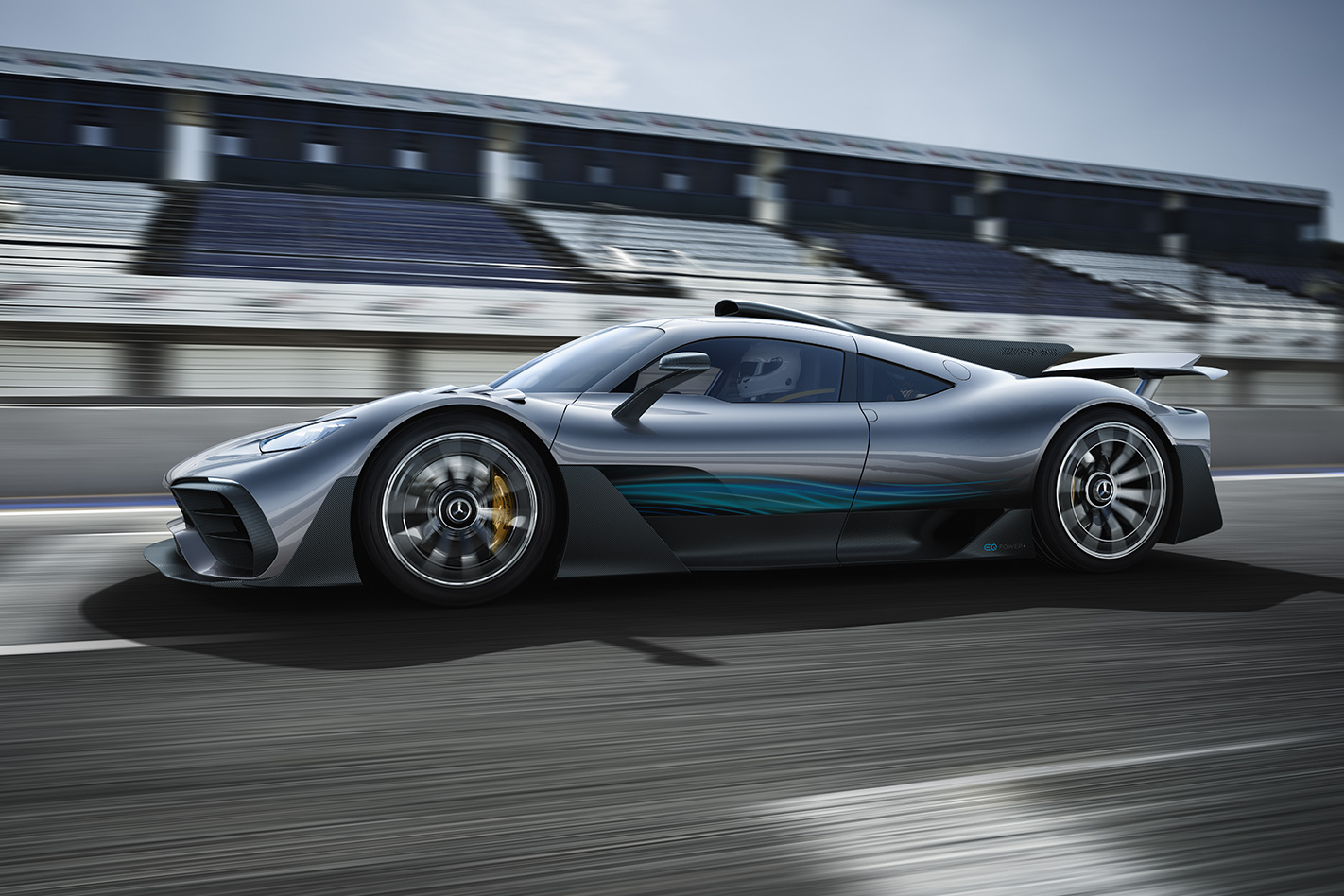
The car’s carbonfibre construction and use of the engine and transmission as a structural member and mounting point for the rear push-rod suspension is heavily F1 inspired.
Active aerodynamic aids, too, are critical to the Project One’s quest for F1-like performance. The large rear spoiler extends in two stages to improve aero efficiency and stability as the air speed increases, while a cluster of smaller fins above each front wheel also control air flow according to road speed.
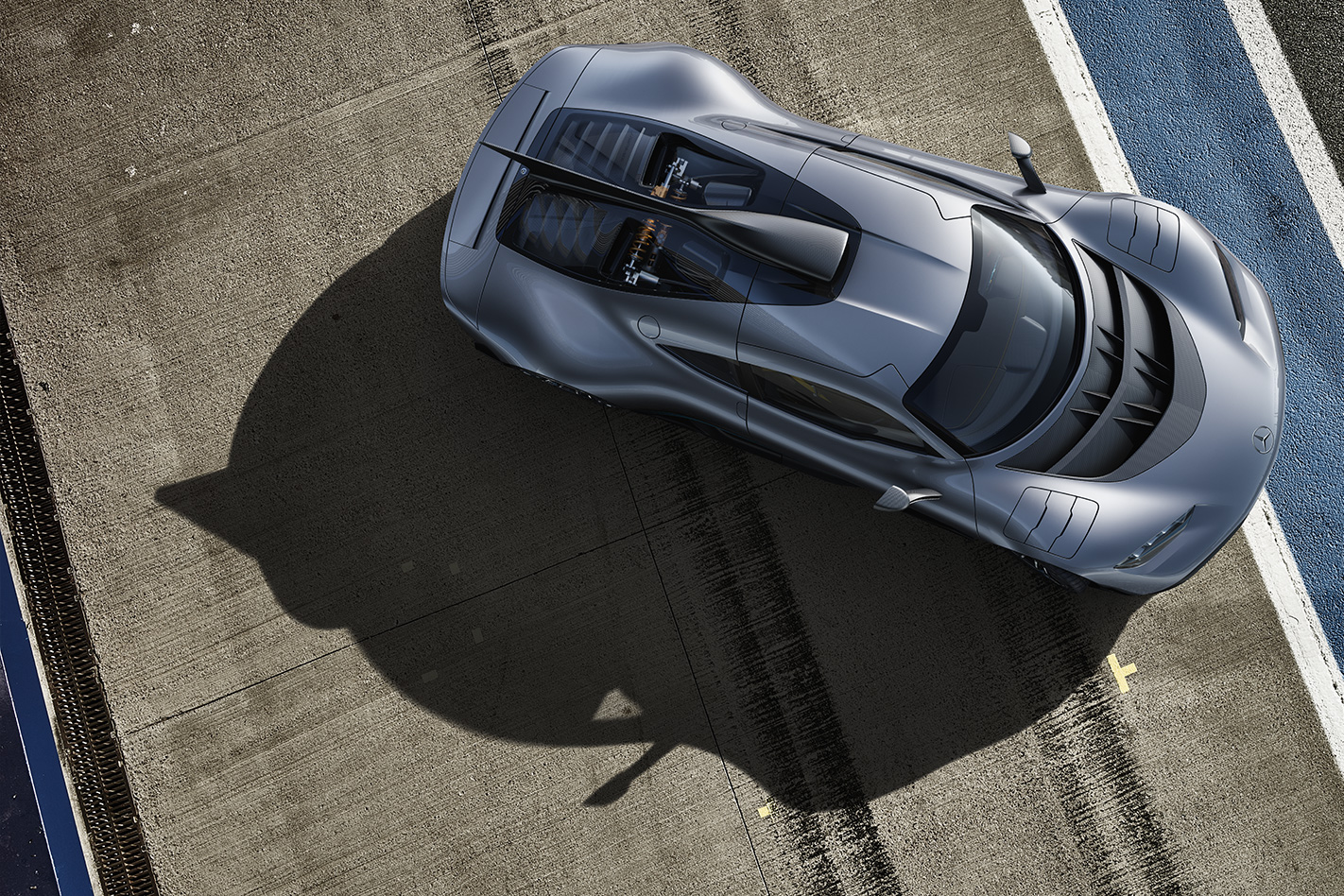
A single large-bore exhaust provides the visual centrepiece of the tail section and appears to have little in the way of silencers. Turbocharged V6 engines may have muted the F1 field on race day, but it seems safe to predict the Project One won’t exactly be subtle-sounding.
Inside is configured for two, with occupants located in place by carbonfibre seats that are incorporated into the car’s monocoque construction. The seats don’t slide, but adjustable backrests, pedals and steering wheel allow passengers to get comfortable.
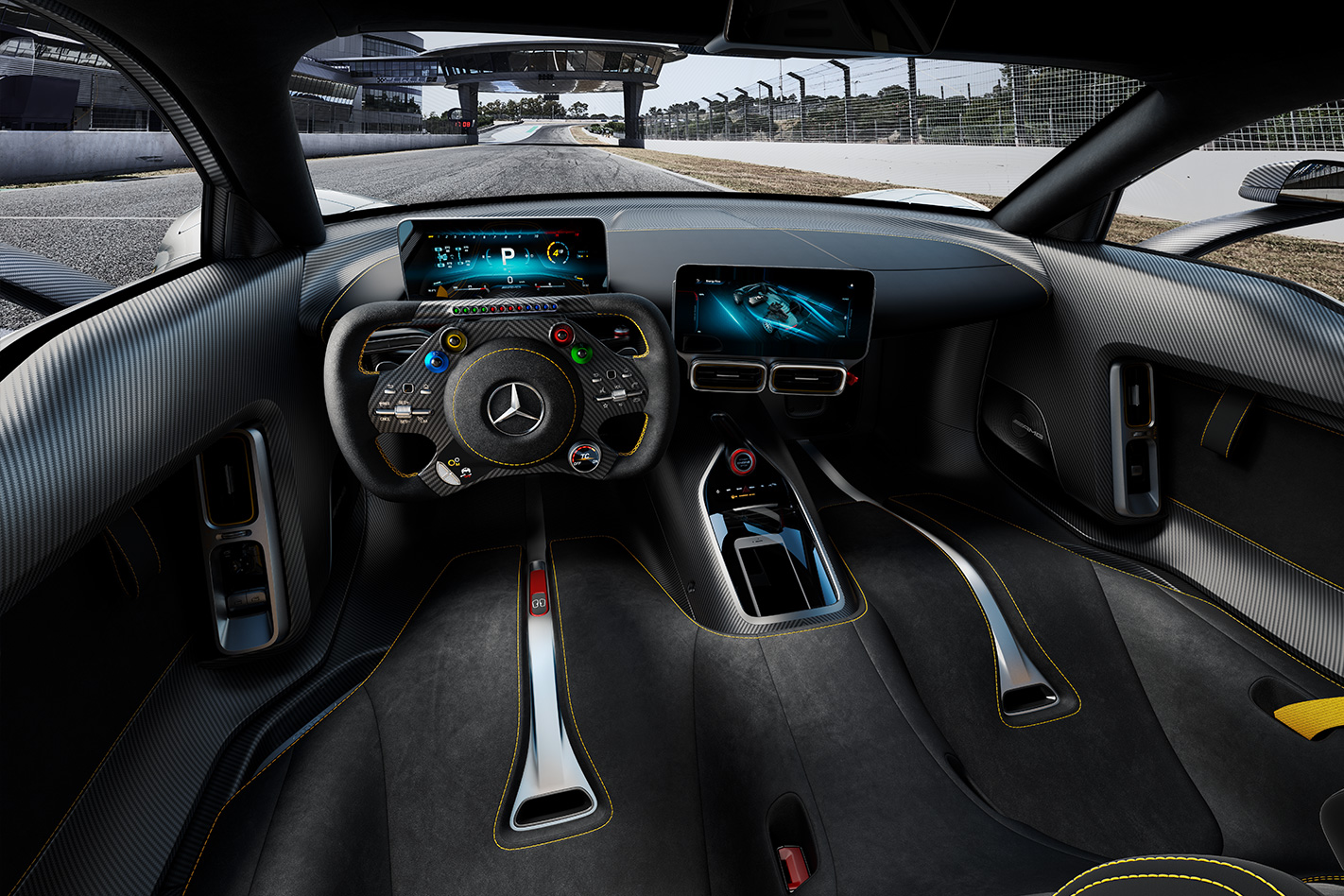
Mercedes-AMG also deemed that air-con, power windows and an audio system were essential, along with storage cubbies behind the seats, and a central compartment with transparent lid. It may have an engine lifted from an F1 car, but Project One is still a Mercedes as highlighted by window switches taken from C-Class.
The benchmarks of hypercar performance, including a Nurburgring lap time, appear to be on hold until the Project One has turned a wheel in public but, already, the mega Merc looks set to bring records tumbling.
Just 275 examples of the Project One will be built, with each selling for around A$3 million. We’re advised that nine are headed for Australia and one for New Zealand.
